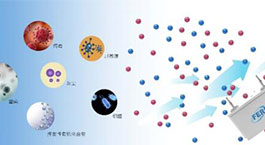 Your current location: Home > Technical Support > Popular Science Column > Fermion's 100 Q...
Your current location: Home > Technical Support > Popular Science Column > Fermion's 100 Q... If we compare heat to water, then the thermal conductivity and specific heat capacity of a unit material can be regarded as the diameter of the water inlet and outlet of the pool and the capacity of the pool respectively. There is no direct relationship between these two parameters.
The simplest example is water and copper:
The specific heat capacity of liquid water is 4200 J/(kg·K), and the thermal conductivity is 0.6 W/mK
The specific heat capacity of copper is 399 J/(kg·K), and the thermal conductivity is 401 W/mK
The relationship between the two is not uniform.
In simple terms, specific heat capacity represents the amount of heat required for a unit weight of material to rise by one degree, while thermal conductivity is the ease with which a material transfers heat. The two are not directly related.
24.What is the working principle of the PBN heater? What material is the insulating layer made of?
PBN material refers to pyrolytic boron nitride material, which is obtained by CVD high-temperature deposition. BN refers to cubic boron nitride, which is obtained by hot pressing. Due to different acquisition processes, the common thickness of PBN parts is less than or equal to 3mm.
The PBN heating plate refers to a thin layer of graphite deposited on a PBN substrate, which is processed (laser engraved) to form a graphite strip to form a graphite heater. Finally, a PBN covering layer is placed on the graphite layer (exposing the electrode part) to form a complete graphite heater. Therefore, the substrate and the insulating covering layer above are both PBN, and the heating element is the graphite ribbon.

25.What are the performance differences and selection criteria between PBN and alumina?
Both are very common vacuum insulating ceramics, but the use environment and conditions are slightly different. We need to talk about them from the perspective of processing technology:
PBN processing relies on CVD gas phase growth, which is a reaction between ammonia and boron halides. In a vacuum environment, the reaction vapor forms a layered growth on the mold surface, and condenses layer by layer to finally form the required PBN parts.
Please note that PBN should be distinguished from BN in that PBN is formed after thermal decomposition (pyrolytic). See the previous question. By controlling the growth parameters to reach the specified thickness, the growth can be terminated, and the PBN parts and molds can be separated by demolding.
The characteristics of the parts grown using this process are obvious:
High purity, because they are grown in a vacuum environment.
The thickness is controllable, and it can be made very thin, because it is originally deposited in layers. As long as the growth parameters are controlled, it can be made very thin, even 0.1mm (structural strength is not considered here).
High precision, when growing, the actual boron nitride film is close to the mold, and can almost be considered as the epitaxy of the mold. Therefore, the precision of PBN parts depends entirely on the precision of the mold. And this mold relies on mechanical processing to achieve very high precision.
The production of alumina is another way. Simply put, the production of alumina parts is divided into two steps: molding and sintering. Its raw material is alumina powder. If high-purity alumina ceramic products are manufactured, in addition to the purity of alumina at 99.99%, it is also necessary to ultra-finely grind and make its particle size distribution uniform. In order to ensure stability during sintering, stabilizers are generally added to the raw materials. Common stabilizers include zirconium oxide and other materials.
After preparing reasonable powder materials, you can prepare to enter the molding process. There are many methods for molding alumina ceramic products, including dry pressing, grouting, extrusion, cold isostatic pressing, injection, casting, hot pressing and hot isostatic pressing. For the parts we use in high temperature and ultra-high vacuum environment, dry pressing molding process is generally adopted: alumina ceramic dry pressing molding technology is limited to objects with simple shapes and inner wall thickness exceeding 1mm, and length to diameter ratio not greater than 4:1. The molding method is uniaxial or bidirectional. There are two types of presses, hydraulic and mechanical, which can be semi-automatic or fully automatic. The maximum pressure of the press is 200Mpa, and the output can reach 15 to 50 pieces per minute. Since the stroke pressure of the hydraulic press is uniform, the height of the pressed parts is different when there is a difference in powder filling. The pressure applied by the mechanical press varies depending on the amount of powder filling, which can easily lead to differences in size shrinkage after sintering and affect product quality. Therefore, the uniform distribution of powder particles during dry pressing is very important for mold filling.
The technical method of densifying a granular ceramic body and forming a solid material is called sintering. Sintering is a method of removing the voids between particles in the body, removing a small amount of gas and impurity organic matter, and allowing the particles to grow and combine with each other to form a new substance. Electric furnaces are widely used as heating devices for sintering. In addition to normal pressure sintering, that is, pressureless sintering, there are also hot pressing sintering and hot isostatic pressing sintering. Although continuous hot pressing sintering increases production, the cost of equipment and molds is too high. In addition, due to axial heating, the length of the product is limited. Hot isostatic pressing uses high-temperature and high-pressure gas as a pressure transmission medium, which has the advantage of uniform heating in all directions and is very suitable for the sintering of complex-shaped products. Due to the uniform structure, the material properties are 30-50% higher than cold pressing sintering and 10-15% higher than general hot pressing sintering. Therefore, some high-value-added alumina ceramic products or special parts required for national defense and military industry, such as ceramic bearings, reflectors, nuclear fuels and gun barrels, are currently made by hot isostatic pressing.
Based on the above processing technology, we can make a list



